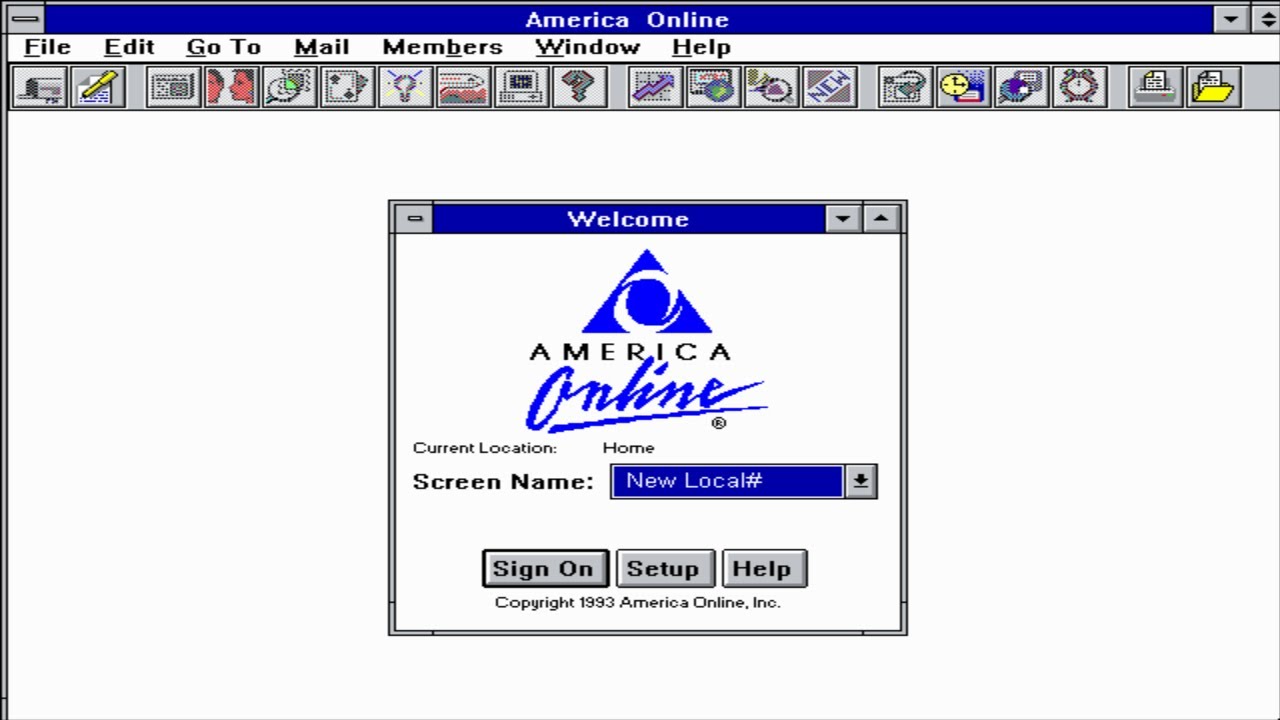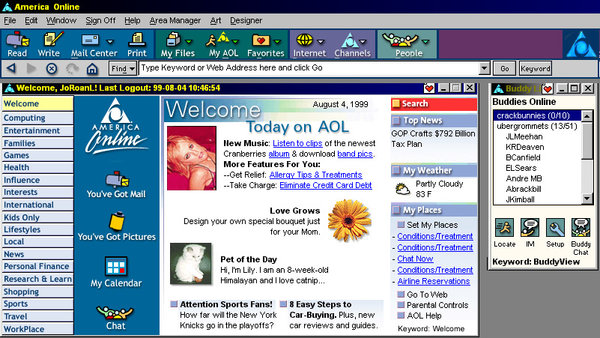f6564af9_AOL_and_early_internet_enclosure
We might view AOL, with its ubiquitous ‘free trial’ CD-ROMs, as the first attempt by a corporate entity to try and enclose the Internet/Web. To take the vast informational expanse and reduce it to a single, filtered and contained space controlled by a single company.

AOL interface from 1993
This would later be achieved or approximated more effectively by Google (under the guise of doing the opposite - people are “empowered” to access the information they otherwise would not find, granted a key to the Internet etc. When in fact, making everyone go through the same gate enables surveillance and the monetisation of the use of a public resource) and then of course by the social media companies.
AOL in fact started this even before there was a Web, pioneering the concept of a web portal, with their modem-based private-BBS business model. This provided access to a circumscribed subset of the Internet at a time when accessing information was opaque and confusing to the average non-technical user. The advent of the web first threatened and then basically obviated this model, when access to information via browsers and HTTP servers made the process easier and more democratized. Hence why AOL then tellingly pivoted to the browser and search-engine market (purchasing Netscape in 1999), the next available mechanism of enclosure.

AOL interface from 1999